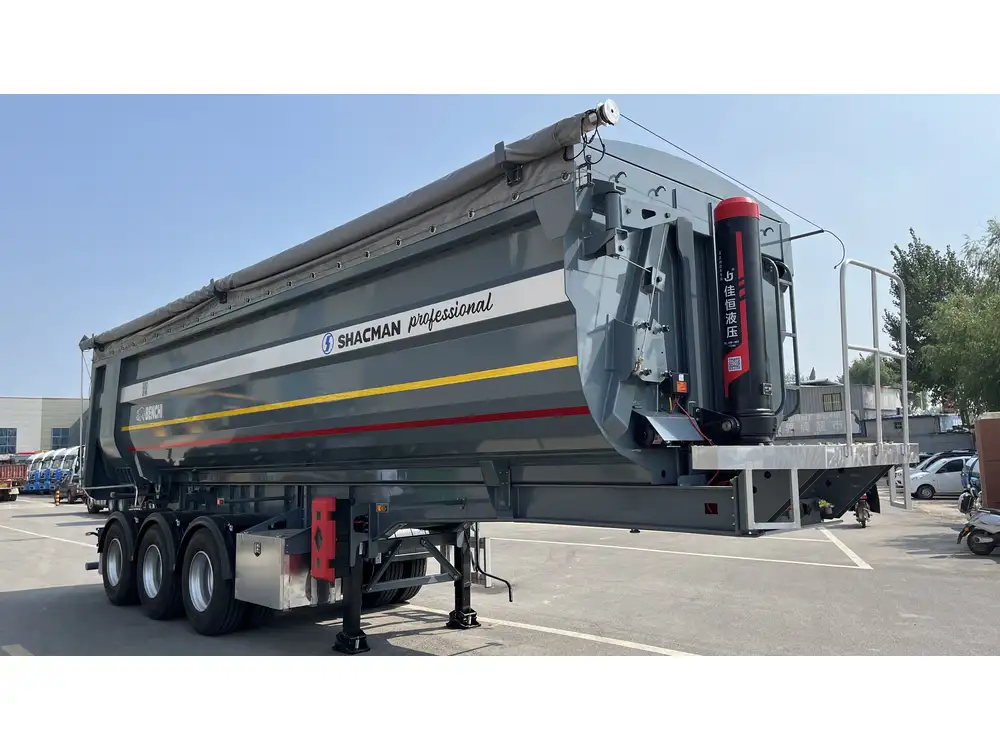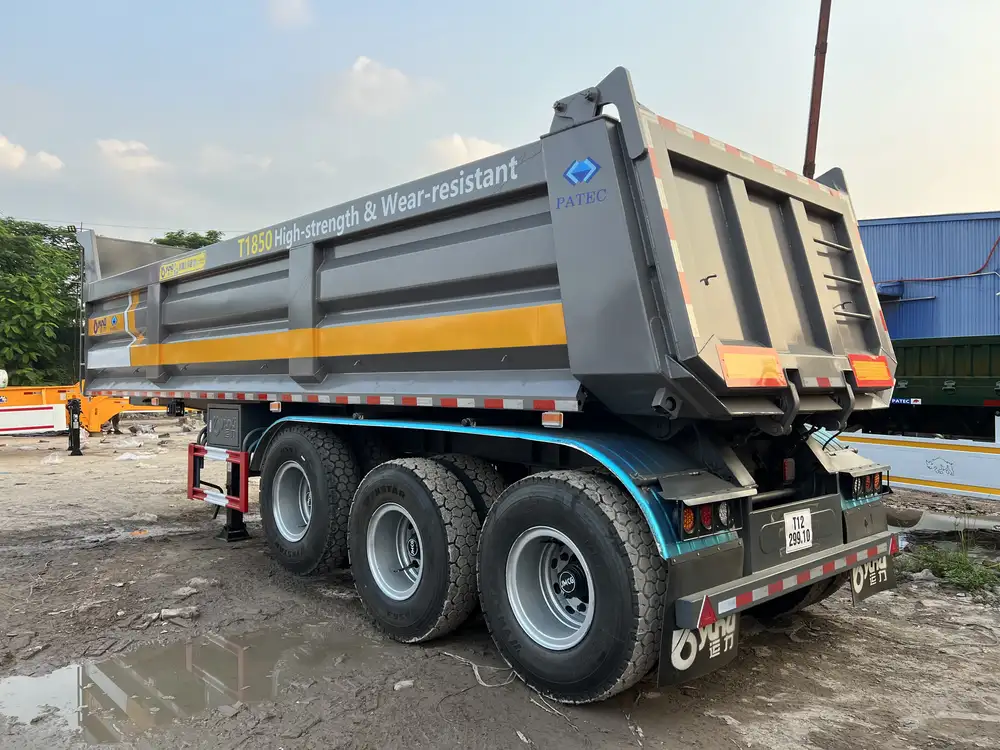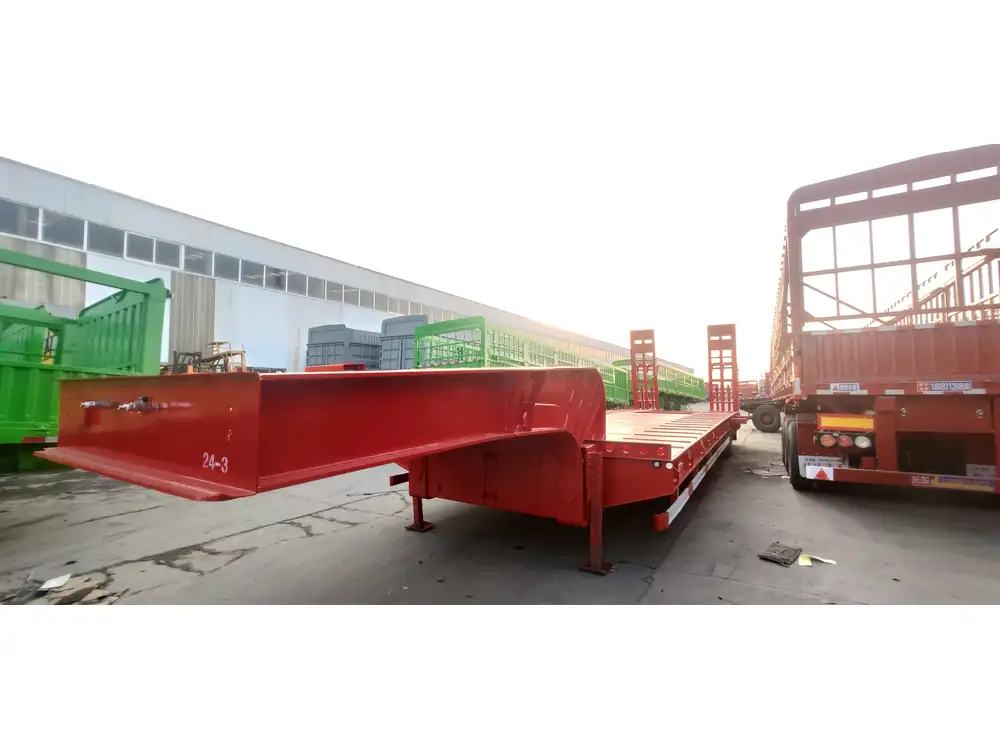The trucking and logistics industries often face a myriad of operational questions, particularly regarding the types of trailers that can be towed with a semi-truck. One common query revolves around the feasibility and regulations of towing a regular trailer with a semi. This comprehensive discussion aims to dissect this topic thoroughly, providing insights, technical details, and essential considerations that every truck operator or fleet manager should keep in mind.
Understanding Semi-Trucks and Their Capabilities
What is a Semi-Truck?
A semi-truck, commonly referred to as a tractor-trailer or an articulated lorry, is composed of a tractor unit and one or more trailers. The tractor unit houses the engine and is designed to pull heavy loads over long distances, making it a backbone of freight transportation.

Configuration of Semi-Trucks
- Tractor Unit: The front portion of the semi that contains the engine and driver’s cab.
- Trailers: The cargo-carrying unit which can vary vastly in type, including flatbeds, refrigerated units, and specialized containers.
Table 1: Common Types of Trailers Used with Semi-Trucks
| Trailer Type | Description | Use Case |
|---|---|---|
| Dry Van | Enclosed trailer for general cargo. | Transportation of goods. |
| Flatbed | Open trailer for easy loading and unloading of heavy equipment. | Machinery, construction. |
| Refrigerated | Temperature-controlled trailer for perishable goods. | Food and pharmaceuticals. |
| Tanker | Trailer designed for transporting liquids. | Fuel and chemical transport. |
| Lowboy | Trailers with a lower deck for transporting tall loads. | Heavy equipment and vehicles. |
Can You Tow a Regular Trailer with a Semi?
Legal and Practical Considerations
In theory, it is entirely possible to tow a regular trailer (often a standard utility or RV trailer) with a semi-truck, provided certain parameters are met. However, several factors should be taken into account, including legality, equipment compatibility, and safety regulations.
Towing Capacity: Each semi-truck has a specified towing capacity that varies based on the model and engine specifications. It’s crucial to verify that the weight of the regular trailer you intend to tow does not exceed this limit. The Federal Highway Administration (FHWA) mandates specific weight regulations, particularly for combined vehicle weight.
Connection Compatibility: Regular trailers typically use a 2-inch ball hitch attachment, while semi-trailers connect via a fifth wheel coupling. Ensure that the semi-truck is equipped with the necessary hitch adapter to connect the regular trailer securely.
Weight Distribution and Load Securing: Properly distributing the weight across the axles is essential for safe towing. Overloading a regular trailer can lead to a host of safety issues, including brake failure and tire blowouts. Always verify load limits and secure cargo effectively.

Regulatory Implications
Towing a regular trailer with a semi can involve more complex regulations than operating a standard passenger vehicle:
- Commercial Driver’s License (CDL): Drivers may need a specialized CDL if the combined weight of the truck and trailer exceeds 26,001 lbs.
- State Regulations: Laws may vary by state regarding maximum towing limits, trailer brakes, and required lighting. Consulting local Department of Motor Vehicles (DMV) regulations is advisable.
Advantages of Towing a Regular Trailer with a Semi
While it can be complex to tow a regular trailer with a semi, there are notable benefits that can make the endeavor worthwhile:
Enhanced Versatility
Utilizing a semi-truck to tow a regular trailer can augment operational capabilities. It allows a single vehicle to transport diverse loads, from standard freight to recreational vehicles, thereby enhancing versatility.

Increased Payload Capacity
Semi-trucks are engineered to handle substantial weights, far exceeding traditional vehicles. This allows for greater flexibility in cargo transportation, whether it’s goods for a business or personal recreational items.
Cross-Utility Possibilities
In instances where a business might need to tow heavy equipment on a flatbed and then switch to a regular trailer, doing so with a semi can save time and increase efficiency, reducing the need for multiple vehicles.
Technical Insights into Towing Mechanics

Hitch Types and Compatibility
The hitch system is a crucial element when discussing towing trailers.
Fifth Wheel Hitches: Found on semi-trucks, they are designed to connect with trailers equipped with a corresponding plate.
Ball Hitches: The standard hitch used for regular trailers. An adapter may be required for a semi-truck to connect securely to a ball hitch.
Comparison: Fifth Wheel vs. Ball Hitch
| Feature | Fifth Wheel Hitch | Ball Hitch |
|---|---|---|
| Connection Style | Kingpin and plate | Ball and socket |
| Weight Capacity | Greater weight capacity | Limited weight capacity |
| Maneuverability | Excellent for sharp turning | May limit turning radius |
| Stability | Highly stable under heavy loads | Less stable under dynamic loads |
Load Distribution and Stabilization
Proper load distribution is vital during any towing operation. Here are some key principles:
- Check Weight Ratings: Always consult the gross vehicle weight rating (GVWR) of both the semi-truck and trailer.
- Level Load: Aim for a level load distribution to prevent trailer sway. An improperly loaded trailer can lead to instability.
- Sway Control Systems: Consider installing sway control mechanisms on the trailer to enhance stability, particularly at higher speeds.
Safety Protocols When Towing
When embarking on a journey towing a regular trailer with a semi, safety must be your top priority. Adhering to safety protocols reduces accidents, ensuring a secure towing experience.

Pre-Trip Inspections
Before hitting the road, conduct thorough pre-trip inspections:
- Hitch Connection: Ensure the hitch is securely fastened and properly locked.
- Lights and Signals: Test all lights, including brake lights and turn signals, to confirm proper functioning.
- Tire Condition: Inspect the tires for adequate air pressure and tread depth.
Driving Techniques for Towing
Towing requires altered driving techniques—particularly when navigating turns or stopping:
- Increase Stopping Distance: A loaded semi takes longer to stop; increase your following distance.
- Smooth Maneuvers: Make gradual turns and lane changes; abrupt movements can cause trailer swaying.
- Anticipate Challenges: Plan for inclines and declines, adjusting speed and gear accordingly to maintain control.
Emergency Protocols
In the event of an emergency while towing, consider these steps:
- Pull Over Safely: If you experience issues, pull over to a safe area where you can assess and remedy the situation.
- Use Emergency Signals: Activate hazard lights to alert other drivers if stationary.
- Secure the Load: Always ensure that the trailer remains secure, even in emergency stops.

Conclusion: Maximizing Efficiency in Trailer Towing with a Semi
In conclusion, while towing a regular trailer with a semi is indeed feasible, it requires careful consideration of various factors—legalities, technical specifications, and safety protocols. Understanding the equipment, regulatory requirements, and employing sound safety practices can enhance your operational flexibility, increase payload capacity, and open the door to a multitude of logistical possibilities.
For manufacturers, fleet owners, and independent operators alike, leveraging the versatility of semi-trucks to tow regular trailers stands as an advantageous strategy in today’s competitive landscape. By embracing the research and insights outlined above, businesses can make informed decisions that enhance operational efficiency and ensure safety on the road.
The journey into the complexities of towing mechanics is not just about functionality; it is an essential part of ensuring that the heart of the freight system continues to drive forward seamlessly.



